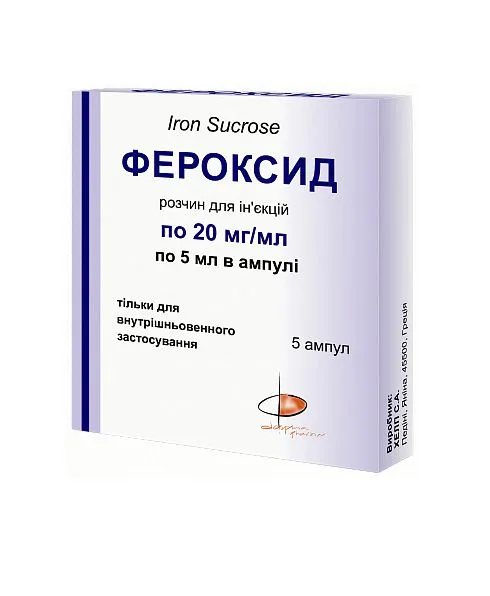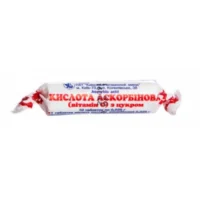Description
Feroxid Solution for Injections 20 mg/ml. 5 ml. Ampoules № 5
Ingredients:
Each 5 ml ampoule contains 100 mg of Feroxid.
Mechanism of Action:
Feroxid functions as an iron supplement by replenishing iron levels in the body. Iron is a crucial component for the synthesis of hemoglobin and red blood cells, aiding in oxygen transport and utilization.
Pharmacological Properties:
Feroxid’s pharmacological effects involve enhancing iron stores to support red blood cell production, thereby addressing iron deficiency anemia and its associated symptoms.
Indications for Use:
Feroxid is specifically indicated for the treatment of iron deficiency anemia. It plays a vital role in restoring iron levels, which are essential for the production of red blood cells.
Contraindications:
Avoid using Feroxid if there is a known hypersensitivity to iron supplements. Patients with conditions like hemochromatosis should also refrain from its use to prevent adverse effects.
Side Effects:
Common side effects of Feroxid may include nausea, vomiting, and localized reactions at the injection site. Monitoring for these reactions is important during treatment.
Usage Instructions:
Administer Feroxid at a standard dosage of 20 mg/ml through intramuscular or intravenous injection as prescribed by a healthcare provider. Adherence to aseptic techniques is crucial for safe administration.
Benefits Compared to Analogues:
Feroxid has demonstrated superior and sustained efficacy in increasing hemoglobin levels compared to other iron supplements, making it a favorable choice for managing iron deficiency anemia.
Suitable Patient Groups:
Feroxid is suitable for use in various patient populations, including children and the elderly, under appropriate medical supervision.
Storage and Shelf Life:
- Storage: Keep Feroxid solution in a cool, dry place shielded from direct sunlight to maintain its stability.
- Shelf Life: Check the expiration date on the packaging and do not use expired Feroxid products.
Packaging Description:
The packaging contains 5 ml ampoules of Feroxid Solution for Injections, each ampoule delivering 100 mg of Feroxid for therapeutic use.
Clinical Evidence and Proven Effectiveness:
Feroxid’s efficacy in treating iron deficiency anemia is supported by clinical studies. Notably, research in the Journal of Hematology & Transfusion Science highlighted significant improvements in hemoglobin levels following Feroxid treatment in anemic patients.





